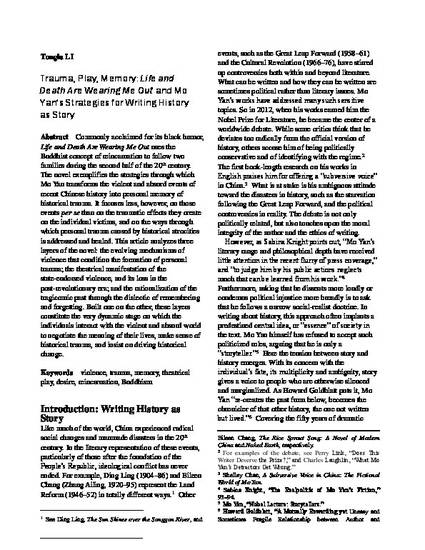
Commonly acclaimed for its black humor, Life and Death Are Wearing Me Out uses the Buddhist concept of reincarnation to follow two families during the second half of the 20th century. The novel exemplifies the strategies through which Mo Yan transforms the violent and absurd events of recent Chinese history into personal memory of historical trauma. It focuses less, however, on those events per se than on the traumatic effects they create on the individual victims, and on the ways through which personal trauma caused by historical atrocities is addressed and healed. This article analyzes three layers of the novel: the evolving mechanisms of violence that condition the formation of personal trauma; the theatrical manifestation of the state-endorsed violence, and its loss in the post-revolutionary era; and the rationalization of the tragicomic past through the dialectic of remembering and forgetting. Built one on the other, these layers constitute the very dynamic stage on which the individuals interact with the violent and absurd world to negotiate the meaning of their lives, make sense of historical trauma, and insist on driving historical change.
Available at: http://works.bepress.com/tonglu_li/8/

This article is published as Li, T., Trauma, Play, Memory: Life and Death Are Wearing Me Out and Mo Yan’s Strategies for Writing History as Story.” Frontiers of Literary Studies in China, 9, no. 2 (2015) 235–258. DOI: 10.3868/s010-004-015-0010-6. Posted with permission.